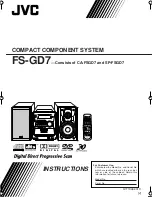
Let's start by setting the level of your sub to
match the rest of your speakers.
From the receiver’s speaker calibration menu, set
the subwoofer level to 0 dB. Start with the gain
on the subwoofer at about 1/4 max.
In the speaker configuration menu (as a part of
the set-up on your HT receiver), be sure all your
speakers are set to “small” with subwoofer to
"yes". The crossover should be set to 100 Hz.
Experiment with what you prefer. Typically,
higher crossover settings are used for systems in
extremely large rooms or with very demanding
low-end material.
Set the volume control on your receiver to the
"00 dB" level. See the note below if your unit
uses a positive number scale for volume instead
of a minus-to-plus scale.
Ensure that all main, center, and rear channels
are calibrated to the reference point using your
test tones, then direct the tone to the sub-
woofer. Adjust its level using the gain control
on the subwoofer itself until it reaches the SPL
level used for the other speakers. An assistant
will be very helpful for this process. Some like
to run their sub “hot” for movies by increasing
the sub level by 5 dB or so above the main
channel level. This can be very effective at
lower listening levels, but be sure to use care
when watching that big action movie for the first
time! Especially at or near reference levels.
Once the subwoofer is calibrated, small adjust-
ments can be made easily using the subwoofer
level control in your processor/receiver. If you
find the need to go much above +2 or +3 con-
sistently, we recommend adjusting the gain con-
trol on the sub upward instead and using a
lower number for reference level* on the proc-
essor.
Note: If your unit does not use a minus/plus
volume scale, activate the test tones and in-
Tyke SW-8 Amplifier Panel
































